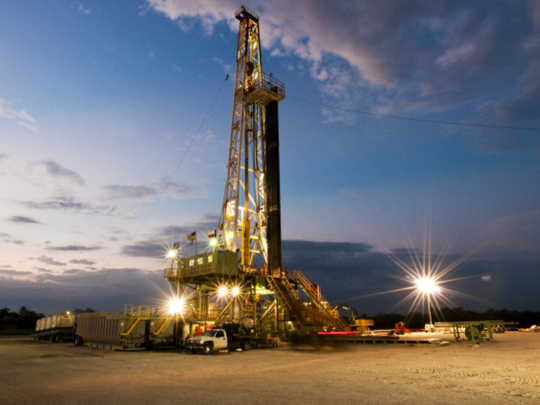
Almost 50 years after the first commercial liquefied natural gas (LNG) plant opened in Algeria, the world is on the cusp of a new age in energy. The basis of this transformation lies in the US — the newly nicknamed gas island on account of the shale reserves it possesses.
Globally, almost 350 million metric tonnes per annum (mtpa) of new LNG capacity has been proposed to be installed by 2025. If implemented, this would increase existing facilities by more than 100 per cent. On the demand side, there has been strong growth as prices have deflated due to new supply. Despite the rising cost of implementing new projects, deal flow continues to demonstrate strength with investors showing an inclination to commit capital. At the LNG 17 conference held in Houston in April, 3,500 delegates were unanimous in affirming the opportunities that exist in this field. A current rebalancing of global supply and demand dynamics is under way with US natural gas production having grown at more than twice the rate of consumption in the past decade. The trend is expected to continue.
Taking stock
Christof Ruehl, Group Chief Economist at British Petroleum (BP), said at the launch of BP’s 2030 Outlook in January, “It is hard to overestimate what has happened when we talk about shale gas or shale oil… In 2005, when the US reached a low point in its domestic oil production, it needed to import 12.5 million barrels of oil per day. Over the period until last year, that went down to 7.5 million barrels of oil imports. So the reduction of imports is accomplished by a reduction in demand driven by efficiency improvements plus this increase in supplies. The Bakken field in North Dakota produced about 100,000 barrels of shale oil per day five years ago.
“Now, it produces about 1 million barrels of oil per day. But, in order to get there, the number of wells that had to be drilled in the Bakken field had to increase beyond the number of wells drilled in a country such as Canada, with much bigger production. These are enormous infrastructure requirements, and they will not be built overnight and they will come first in those countries where the competitive environment is in place to generate these infrastructure environments,” he said
Proposed LNG export capacity in the US is more than 200 mtpa, which could potentially handle 28 billion cubic feet per day of exports. This is, however, in excess of what would be required today considering global demand, which as of 2012 stood at 250 mtpa. By 2020 it is projected to grow to 400 mtpa and up to 500 mtpa by 2030.
Demand is being driven by downward pressure on gas prices. North American natural gas spot prices (Henry Hub Natural Gas) currently stand at around $4 (about Dh14) per million British Thermal Units (MMBtu). This figure was well over $10 per MMBtu only a few years ago.
Falling extraction costs compared to the rest of the world coupled with plentiful supply and low prices are making a strong case for export. The export potential from the US, however, is largely dependent on surplus gas. This is according to the US Energy Information Administration, which also states the importance of policy support from the Government.
CEO of Texas-based US Petrochemical, Laique Rehman says, “There is no single event in our recent history that has had as major an impact on the lives of ordinary people globally than the advent of shale gas in the US will. More than $100 billion is expected to be invested in the petrochemical sector alone in the US over the next few years. Investment will not just be limited to this sector, but cheap power costs will encourage investment in energy-intensive industries such as steel. We have some of the world’s cheapest gas at the moment. Qatar sells LNG to Japan at more than $15 per MMBtu. Ours is around $4 per MMBtu.” Shale gas production outside the US is not anticipated for the next 15 years. The main reason for this is the requirement for experience and data from more than 100,000 tight and shale wells to ascertain sweet spots for drilling.
Fracking, an environmentally controversial extraction process, provides finite choices for finding the right combination for ideal drilling conditions. The US has a greenfield policy, which also puts pressure on fracking options. The cost of production by fracking outside the US would be at least 50 per cent more.
Annual consumption worldwide is growing by 10 per cent, with LNG demand growing at a faster rate. Consumption is expected to grow by 14 mtpa on average through to 2025. The International Energy Agency predicts that the proportion of natural gas in the global energy mix will grow from 21 per cent in 2010 to 25 per cent by 2035. Natural gas is the only fossil fuel with a positive outlook, with a growth rate double that of conventional oil.
Shale gas discoveries in the US and the Fukushima nuclear disaster have created an imbalance that has driven the natural gas market. New supplies came in at an opportune time, causing prices to drop. Natural gas was well primed to service the demand shocks that followed. The geographical divergence of prices has also created opportunities, adding weight to the case for the US to begin exporting.
Demand dynamics
Abbas Bilgrami, CEO of Progas, an energy firm in the Middle East, says, “There is a very strong likelihood that most of the natural gas surplus in the US will be consumed by displacement of coal as a power generation source. When US coal is displaced internally, it will become available in a major way at desirable prices. This large coal supply will affect the global pricing of coal from Indonesia, Australia and South Africa. One also cannot ignore the huge production of conventional natural gas production that is expected from Angola, Mozambique and Tanzania.
“The collective production of these new horizons is expected to be at least 60 million tonnes of LNG. Another wild card is the incredible production potential of shale gas in China. This production will happen quickly and Deutsche Bank has a particularly bullish view on this. Most people forget the dynamics of competing fuels as one becomes cheaper and displaces others — cheaper fuels such as coal, which have a liquid market and export capability, in this case in turn, create a ripple effect, which fills the energy need,” he says.
LNG contract pricing is currently based on pegging the price to the price of oil. Some economies, namely in Europe, have shown an appetite to convert the practice into spot gas price linkages. More than 80 per cent of business is carried out through long-term contracts. >
Short-term trading of natural gas provides the basis for a conversion to gas-on-gas pricing in the future. Trade will be facilitated by an increasing number of LNG hubs. Spot pricing would have a huge positive impact on the market. Buyers would be able to hedge their orders and there would be greater flexibility in shipping cargo, which would increase liquidity. With greater liquidity, investors are more likely to sanction new projects.
Ryan Lance, Chairman and CEO of ConocoPhillips the energy major, said in a speech at Columbia University in April, “As recently as the early 1990s, US natural gas production, reserves and demand were falling — no longer. Since then, proved reserves are up nearly 90 per cent. The Potential Gas Committee estimates our recoverable resources at nearly 2,400 trillion cubic feet. That’s the highest in the committee’s 48-year history — and nearly a century of supply.
“Production is up one-third since 2005 — with another 60 per cent rise expected by 2030. The US no longer needs to import liquefied natural gas. In fact, we could soon become an exporter. The shale revolution is also spreading. Dozens of countries have potential. But development elsewhere won’t be as fast as here. We have some big advantages. A large drilling rig fleet, skilled workforce, established legal and regulatory systems, proven environmental and safety record, and privately-owned mineral rights available for leasing. Companies with scale and technical expertise have much to choose from: deepwater prospects, onshore shale, the oil sands, coal seam gas, conventional oil and gas, and LNG,” he said.
If US exports open up, competition will cause a convergence in regional prices. The narrowing of the price gap is also a result of the steady increase in the number of players in the market, greater overall liquidity, and growth in infrastructure for natural gas. 7






